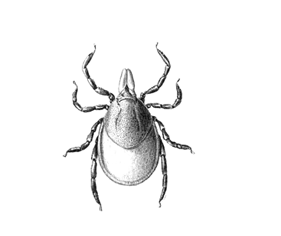Lyme disease
Lyme disease is caused by a bacterium carried by the deer tick. When an infected deer tick attaches to a person (host) long enough to take a full blood meal, the bacteria could be transferred to the host's blood and cause illness.

Lyme disease is the most common reportable illness within the health district. This disease is one of three diseases caused by the bite of an infected deer tick (Ixodes scapularis). The tick carries a type of bacterium called Borrelia burgdorferi which is responsible for lyme disease. The two other less common diseases carried by deer ticks are human babesiosis and human granulocytic ehrlichiosis. The deer tick is capable of co-carrying these disease agents. Another common tick in Connecticut, the dog tick, (Dermacentor variabilis) is not capable of carrying the lyme disease bacterium.
The health district offers the service of tick testing by the Connecticut Agricultural Experiment Station ($5 processing fee). If you or a family member finds an attached tick, after removal, you may bring the tick to the health district. After an initial confirmation that the tick is a deer tick, it will be forwarded to the Ag Station for definitive identification and for the presence of the lyme disease bacterium.
The health district has educational information on lyme disease as well as backyard tick control. The Connecticut Agricultural Experiment Station (https://portal.ct.gov/CAES/Tick-Office/Tick-Office/Tick-Related-Information) is another excellent resource for tick information and control.
To read FAQ's about Lyme Disease, click here.
